David Nicole on the Mughal Warfare (part of 2)
Sabers and shield of the Indian Mughal era horsemen.
The second came dakshili or "additional troops", which were hired and paid by the state. They also formed an elite cavalry unit, called Tabinan-i Khasa-Fallen, and during the reign of Aurangzeb numbered about 4000 people. That is, it was a kind of counterbalance to Ashadi.
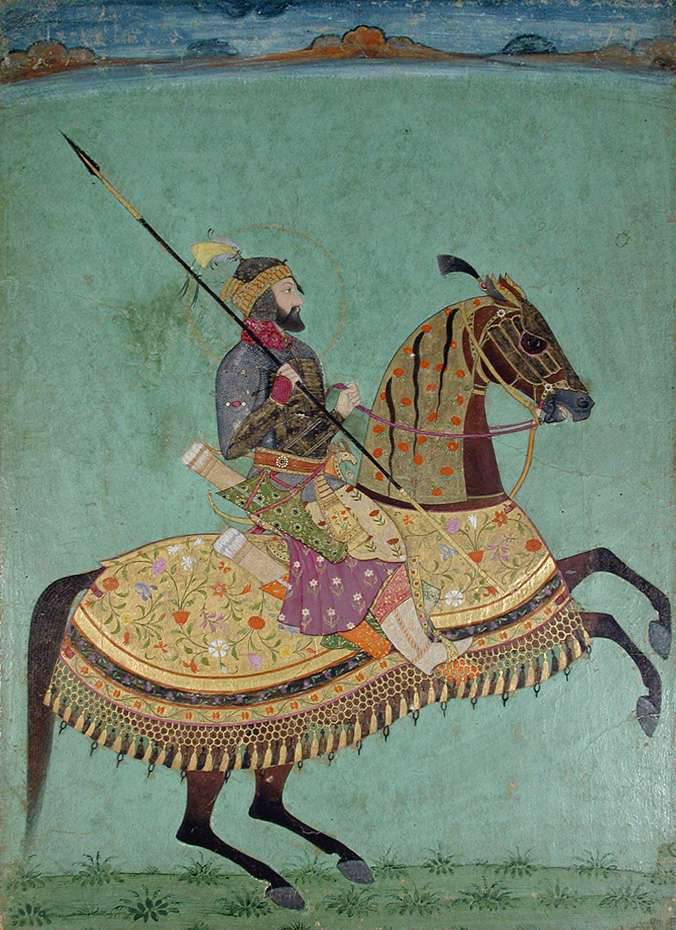
Shah Aurangzeb on horseback. San Diego Museum of Art.
The troops, which were recruited personally by manzabdars, made up the third part of the cavalry. These were mostly ordinary tabinan. Their weapons and training standards varied greatly depending on where they were recruited. Their first duty was loyalty to their manzabdars, who attracted them to the service, and they turned out to be the most reliable element of the Indian cavalry during the reign of Akbar.
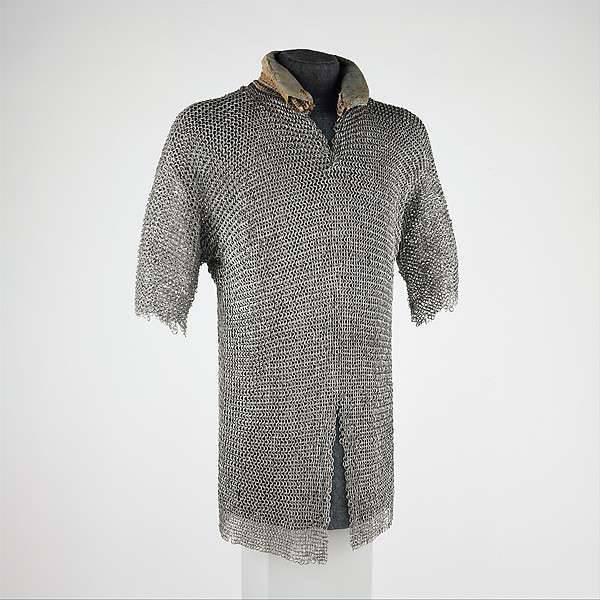
Indian mail 17-19 centuries. Metropolitan Museum, New York.
The fourth and last part of the cavalry were irregular troops of local rulers and tribal leaders. Many of them were Hindu zamindars belonging to the warrior caste, whose rights were recognized by the Mughal government. Under Akbar, 20 zamindars, each with their own troops, usually took part in his campaigns. In turn, the zamindars paid the Mongols regular tribute and, at their first request, provided them with their troops when it was necessary. In these parts there was a very high ethnic or cultural specificity: Afghan recruits usually served in the Afghan manzabdar, the Turks served "under the Turks", and so on. Even if this principle was violated in later years, many divisions continued to have in their ranks a significant number of men of “correct” ethnic origin.
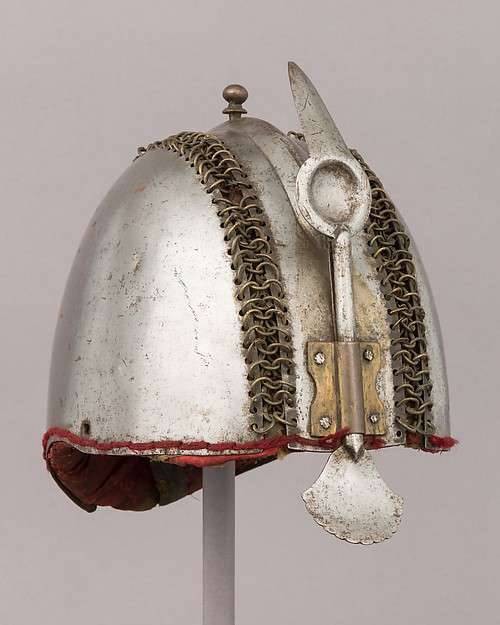
Indian segmented helmet. Metropolitan Museum, New York.
The quality of the troops was tested using a system known as dah, borrowed from the past and reanimated during the military reforms of Akbar. Simply put, it was recorded in detail that what kind of warrior was available, and once a year a review was held where the presence of everything recorded was checked.
Little is known about the training of the Mughal cavalry, although, of course, the recruits had to undergo tough tests of their "suitability" and riding skills. It is known that the preparation was carried out at home using weights or heavy pieces of wood; in the rainy season the soldiers engaged in wrestling. Archery and trained on foot, and in the equestrian; and the Indian cavalry, especially the Hindu Rajputs, were proud of their ability to fight as infantry when necessary and as cavalry. It was obligatory exercise with a sword and shield.
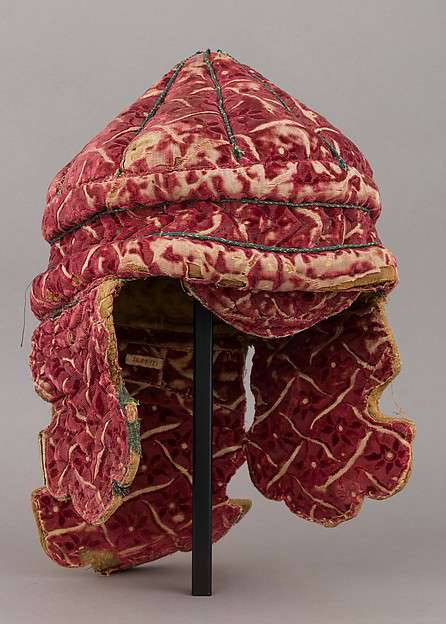
An Indian helmet made from 18 cotton stuffed into. Weight 598, 2 Metropolitan Museum, New York.
The importance of horses in cavalry is obvious. Throughout the Middle Ages, a large number of horses were imported to India, mainly from Somalia, Arabia, Central Asia and Iran. Already in the times of Babur, wounded horses were sent to cool mountain pastures in Afghanistan to recover there, because, like in the hot Indian climate, they felt unimportant. The Mughals created their own well-organized imperial stables under the direction of a special atbegi official, and the staff of the stables were chosen very carefully. Akbar raised the level of horse breeding within India so highly that horses from Gujarat were valued even higher than horses of famous Arabian breeds.
The Mughal prized horse for strength and endurance above speed, perhaps because their cavalry used horse armor. Some horses were trained to walk or jump on their hind legs, to enable the rider to attack the elephants. The Persians, however, believed that the Indians made their horses too obedient, which "oppressed their spirit."
The Mughal infantry was never as prestigious as cavalry, but played an important role. Most of them were poorly armed peasants or townspeople hired by local Muslim manzabdars or Hindu zamindars. The only professional infantry consisted of "musketeers", the best of whom, it seems, were from the lower reaches of the Ganges and Bengal. However, at first only a quarter of the usual infantry was armed with muskets; the rest were archers or served as carpenters, blacksmiths, water-carriers and pioneers. Part of the infantry was recruited from the foothills near Rawalpindi. In the 16 century, warriors from the mountainous deserts of Baluchistan were also recruited; they fought like foot archers and also like camel archers. Ethiopians are sometimes mentioned, but mostly as palace eunuchs or ... policemen in the city of Delhi.
The infantry belonged to the Dardans — porters; special security units, apparently recruited from "thieves and thieves," and, finally, the kitchens - vacuum trucks. But the most exotic was the "infantry" of Urdu Begis, a division of armed women who were guarding the imperial harem.
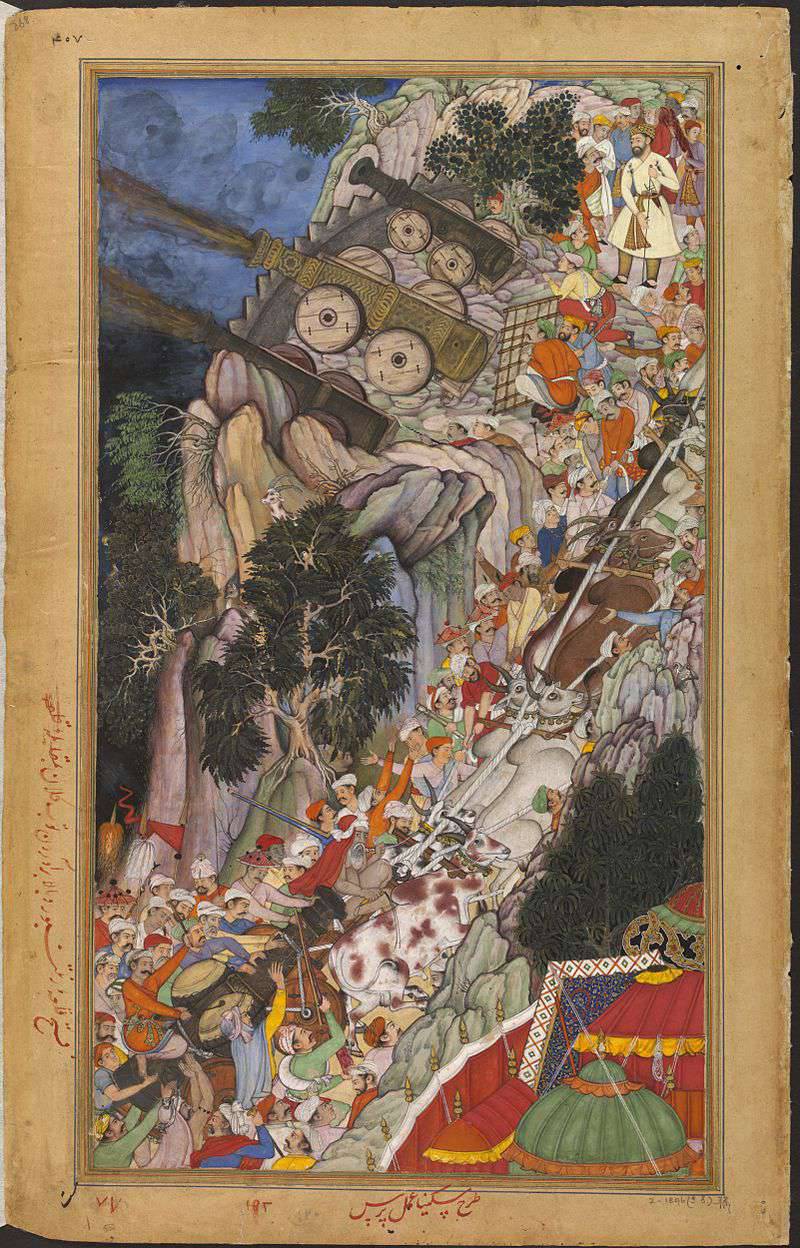
Siege of Rathambor fortress. Akbarname, approx. 1590 Victoria and Albert Museum, London.
At the bottom of the scale was the Hindu local boomi militia. Their duty was to preserve law and order, as well as fight religious fanatics, organize illuminations on religious holidays, protect the city in the event of an enemy attack, and even ... assist widows forced to commit sati or Hindu ritual suicide, want to. Each Sarkar or rural district was responsible for its own militia, but there were also forces of the local Raj. And it is interesting that one of their burdensome duties was to compensate any traveler who was robbed during the daytime, that is, he was subjected to sheer violence. If the theft took place at night, it was believed that it was the victim's fault: it was necessary not to sleep, but to protect our own good!
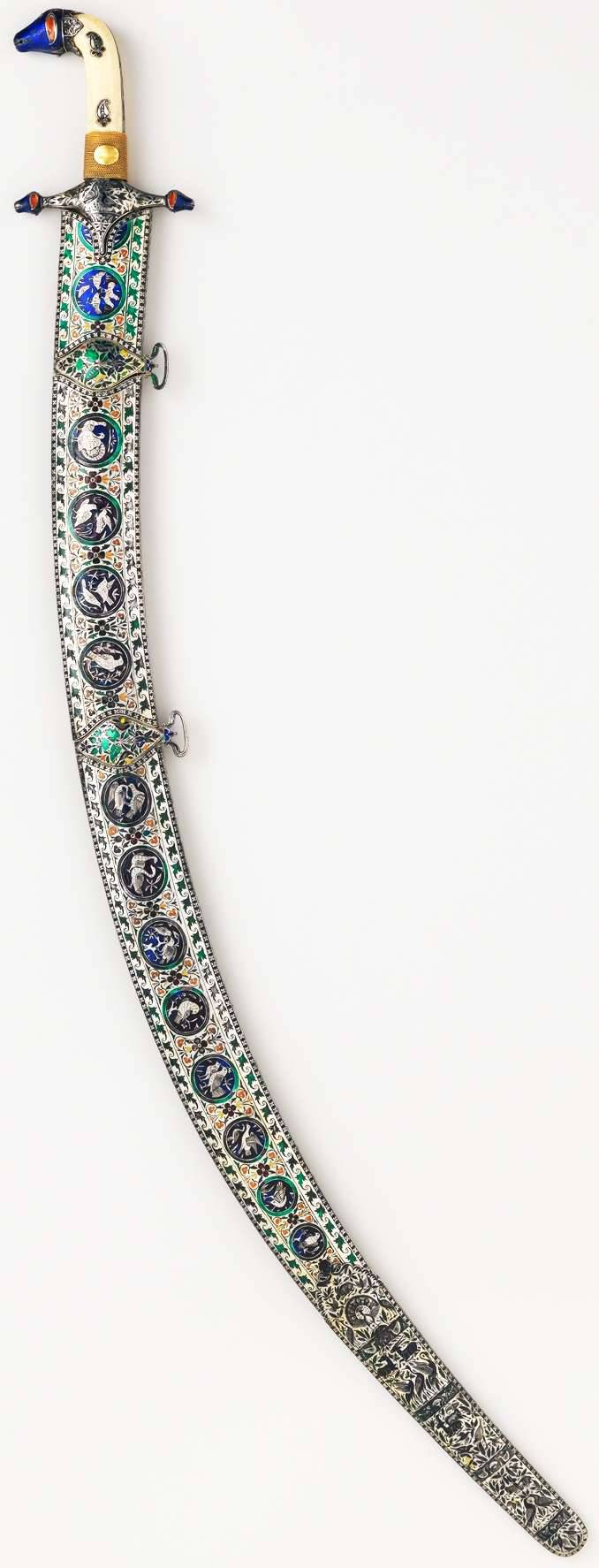
Indian saber shamshir, 19's beginning. Steel, ivory, enamel, gold, silver, wood. For the length of the 98.43, see Metropolitan Museum, New York. In collection with 1935 of the year.
The armament of the Mughal infantry was very diverse. Interestingly, the Indians preferred to use wicker muskets, even parts of the military elite, since they were more reliable in conditions of damp that prevailed in India than rifles with a flintlock. Most infantrymen have armaments that include swords, shields, spears, daggers, bows, and sometimes crossbows. The powerful composite bow of Central Asian origin has been known in India for thousands of years, but such bows have suffered greatly from the local climate; As a result, the Indians used kamta or simple onions, similar in design to medieval English onions.
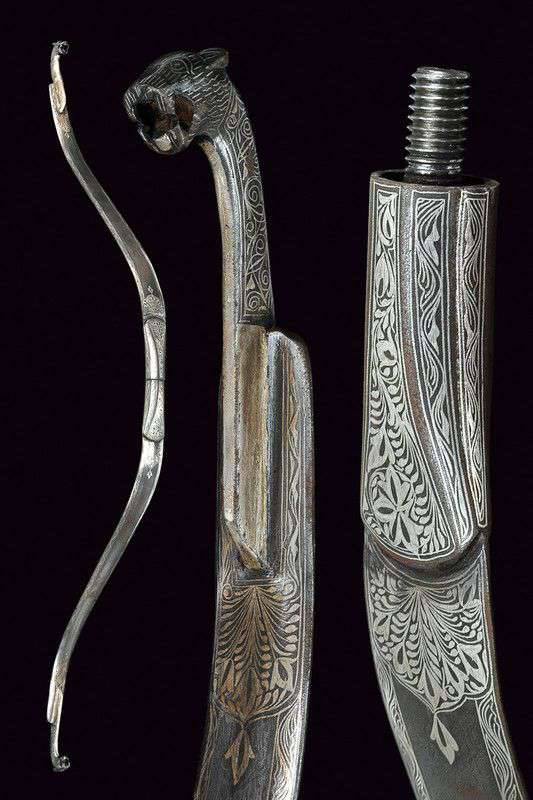
Indian 1900 steel bow. Wallace Collection, London.
It is known that even in antiquity, when the Maurya state existed in India, archers used bamboo bows of such size that they pulled them with their feet! Well, Muslim India has developed its own type of bow, suitable for the Indian climate - steel, made of Damascus steel. The main occupation of the infantry was the siege, and since there were a lot of castles and fortresses in India, the Mughals simply could not do without infantry. European travelers, however, noted more than once that even the emperor’s own “musketeers” were not as well trained as European ones.
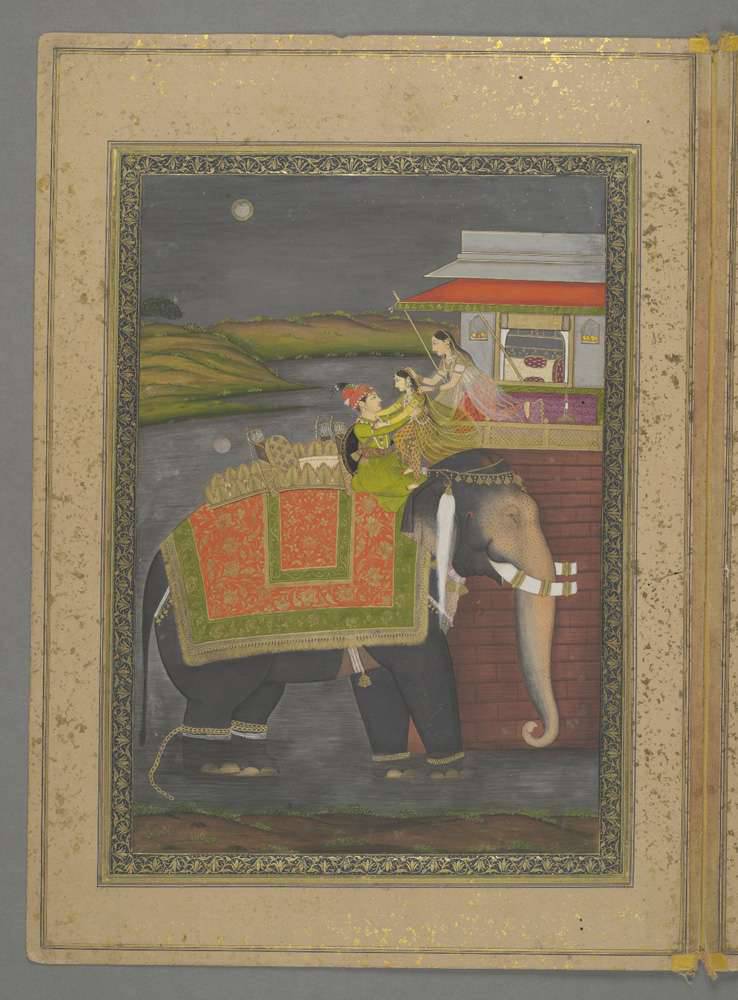
With the help of an elephant, you could steal your beloved straight from the balcony. Bodleian Library, Oxford University.
War elephants were an important, though not the main, element in the Mughal army. The females were used to carry baggage and transport guns; male elephants were trained to fight. Western observers constantly underestimate the importance of elephants in the war. However, Babur himself claimed that three or four elephants could carry a large gun, which otherwise would have to pull four or five hundred people. (On the other hand, he also noted that one elephant eats as much as would be enough for fifteen camels.)
The main function of war elephants in the Mughal army was to use them as a ... platform for commanders to give them enough height to watch what was going on. True, it turned them into a good target, but then it was easier for them to escape than all the others, since the running elephant is like an all-destructive battering ram!
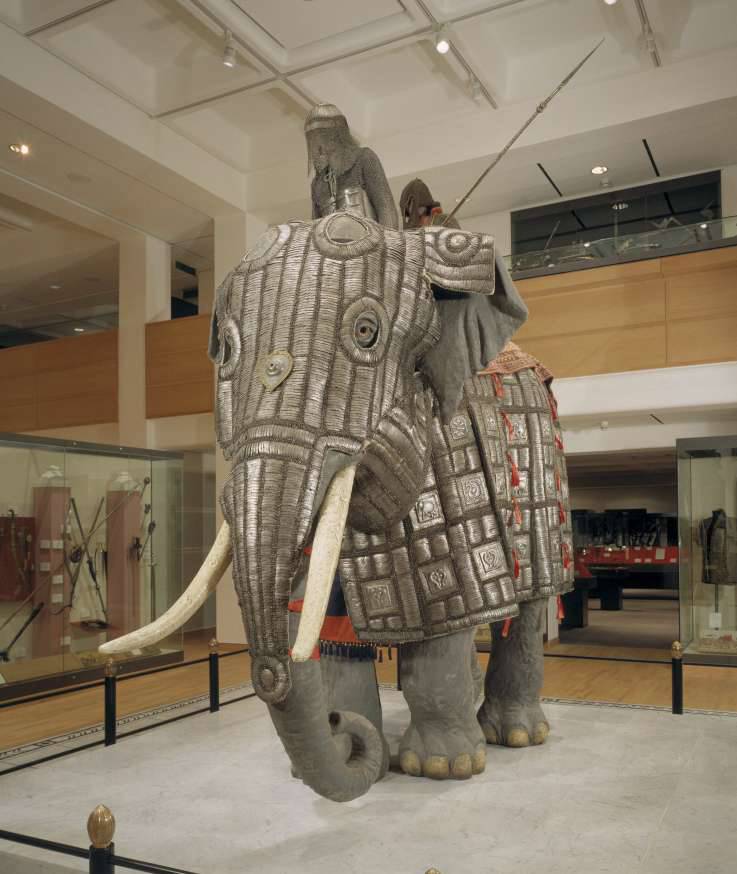
Indian war elephant in armor from the Royal Arsenal in Leeds, England.
In 1526, Babur wrote that he witnessed how Indian war elephants attacked his horsemen, trampled a lot of horses, so their riders had to run on foot. Elephants are hard to kill, although not too hard to repel, he wrote further. Akbar also did not refuse elephants. He created several "centers" for the training of these animals, starting with ten years. And the first thing they were taught was not to be afraid of the sound of shots! Soon Akbar received several detachments of elephants, on whose backs musketeers and archers sat. Some "armored elephants" carried on themselves even a small gun.
At the beginning of the 16 century, a Portuguese traveler noted that the Great Mughals had very big guns. He also noted that the Indian bronze cannons were superior to those made of iron. He noted the use of "European" light field guns, which were called faringi, zarbzan, which were run by two men, and tyueng muskets. Babur's heavy guns could shoot at 1600 steps. As for the army of Humayun, it was reported about her that she consisted of 700 guns drawn by oxen, as well as 21 heavy gun, which was transported by elephants.
In the past, Indian guns were always richly decorated.
Under Akbar, India, along with the Ottoman Empire, became the leading state of the Muslim world in the development of artillery. The emperor created new factories and ordered to check all the new guns by shooting. Akbar is credited with creating an 17-barrel weapon and a special tool to clean all 17 stems at the same time.
The muzzle of an old Indian cannon.
The standard tool was a wick gun with a barrel length of about four feet, and for large guns it was six feet. Stone cores, a canister were used for shooting, but the infantrymen also used ceramic powder grenades and rockets from bamboo trunks.
Rockets, in fact, have become increasingly popular in India since the middle of the 16 of the 20th century. The range of their flight was up to 1000 yards, and it is known that the launchers were often transported by camel. Some of them had powder warheads, while others should simply “ride” on the ground to frighten the enemy's horses. British officer named Congreve saw weapon in India in 1806, he proposed his own version ("Congrive's rocket") of an Indian rocket, which the British used in the Napoleonic wars.
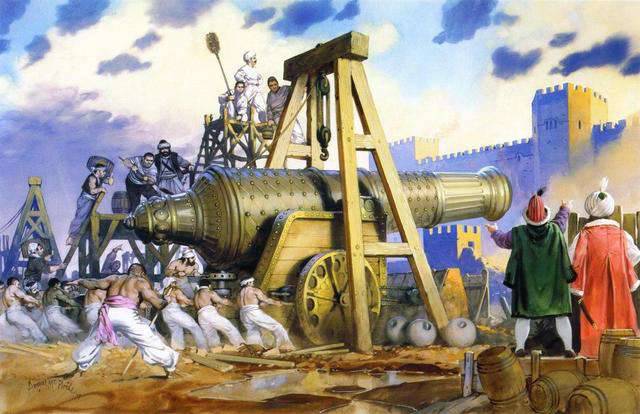
Figure by Angus McBride. Urban's gun at the walls of Constantinople. The Mughals also had about the same guns, only they carried elephants with these guns.
Babur was the first Indian ruler, who turned the artillery into a separate branch of troops under the strict control of the state, that is, directly at the imperial court, where there was a special officer rank of peace and atish, which was responsible for it. Interestingly, most of the gunners were Ottoman Turks, but also Arabs, Indians, Portuguese and Dutch. From the middle of the 17 century, there were many European mercenary gunners of very high rank in the Mughal army; one Dutchman, for example, served in India for 16 years before returning home to a rich man.
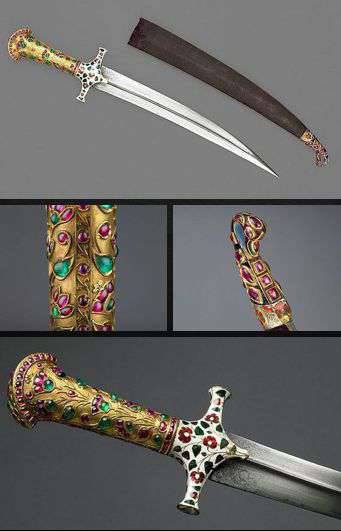
Indian Dagger of the Mughal era: steel, gold, rubies, emeralds, colored enamel. Wallace Collection, London.
The Mughal artillery reached its peak under Aurangzeb in the second half of the 17-th century, which also greatly loved the big bronze cannons. Their trunks were intricately decorated, and they themselves had heroic-sounding names. True, they rarely shot. Light guns - every 15 minutes, while giant guns once every 45 minutes.
The transport system of the Mogul army was well organized. Cargo was transported on Bactrian camels, bulls, as well as elephants. But only the emperor's own troops had special military kitchens. The rest of the troops ate "individually" and ... somehow! Medical services were even worse than other Muslim armies, most of the wounded could only rely on their own relatives, who could assist them after the battle.
Indian mail and lamellar armor.
Communication and supply of the army was carried out by rivers, the benefit in India is the Indus and the Ganges. It is interesting, D. Nicole writes, that the Indian Ocean was a surprisingly calm place for navigation, until the Europeans got there. Large ships sailed there, some of which were used as military transports during coastal campaigns. The only real Mughal fleet consisted of 750 ships that were supposed to protect the coast from Burmese, Bengali and European pirates.
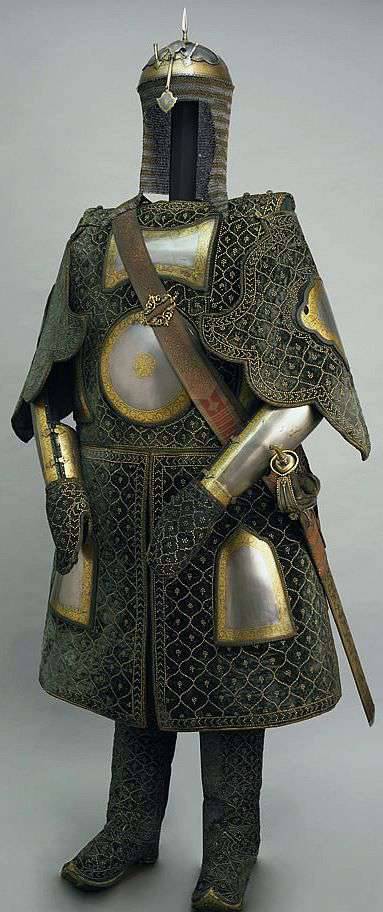
18's Indian Court Guardsman in protective clothing, called "the armor of ten thousand nails." Armed with a hand sword. Wallace Collection, London.
Europeans who visited India in the middle of the 17 century describe soldiers of the Mughal army as brave, but undisciplined and prone to panic. Jealousy between senior commanders was an even more serious problem, as it created unnecessary and dangerous rivalry. But the main problem, most likely, was the complicated structure of the military system adopted by Akbar. Shah Jahangir tried to simplify it, but made it even worse.
When Shah Jahan ascended the throne, he discovered that his army was much more on paper than in reality. Senior officers lent (!) Each other their troops during the census, while others in front of her recruited untrained people in the bazaars and put them on any available horse. Shah Jahan recognized the situation as critical, and in 1630, he decided to reduce the size of the army to what it really was. At the same time, he also lowered officer salaries and made the salary dependent on the competence of the officer. In practice, this meant that successful commanders were given more money so that they could buy additional horses. A system of "bonuses" was introduced, and control over the collection of money in the field was tightened. But all these measures did not give great results!
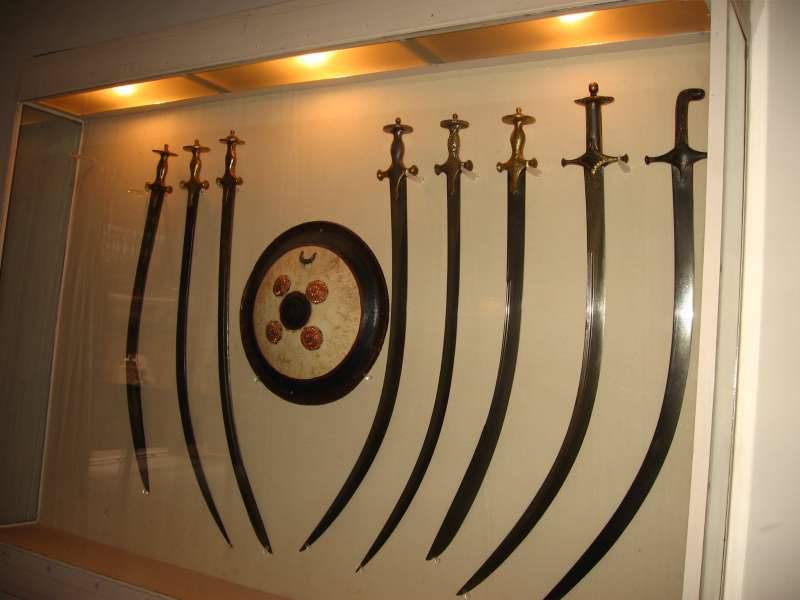
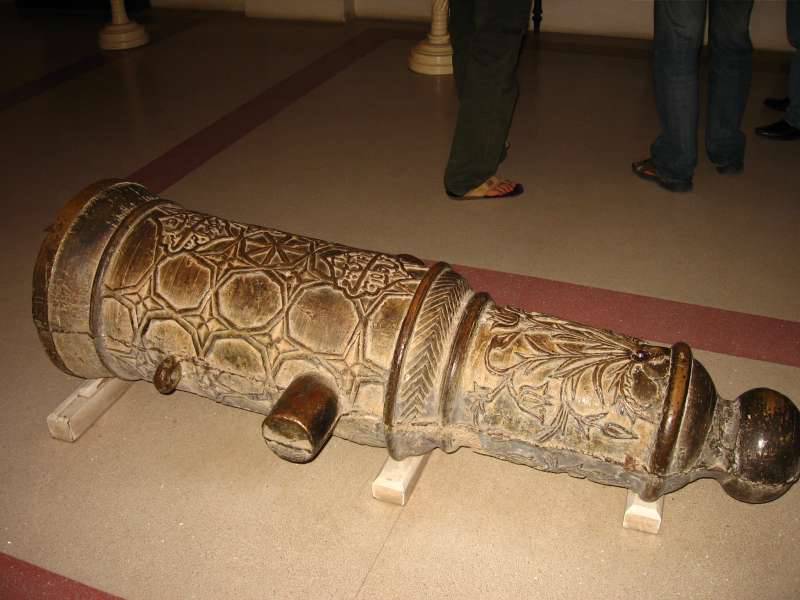
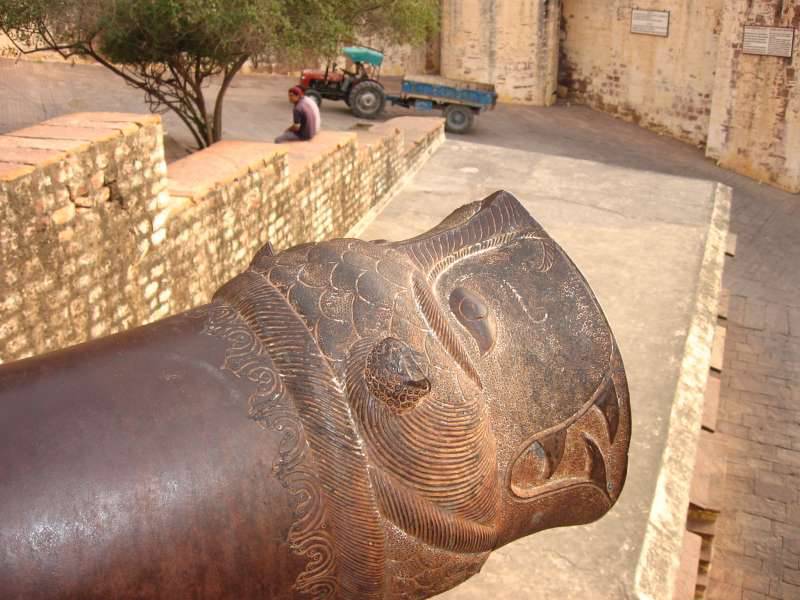
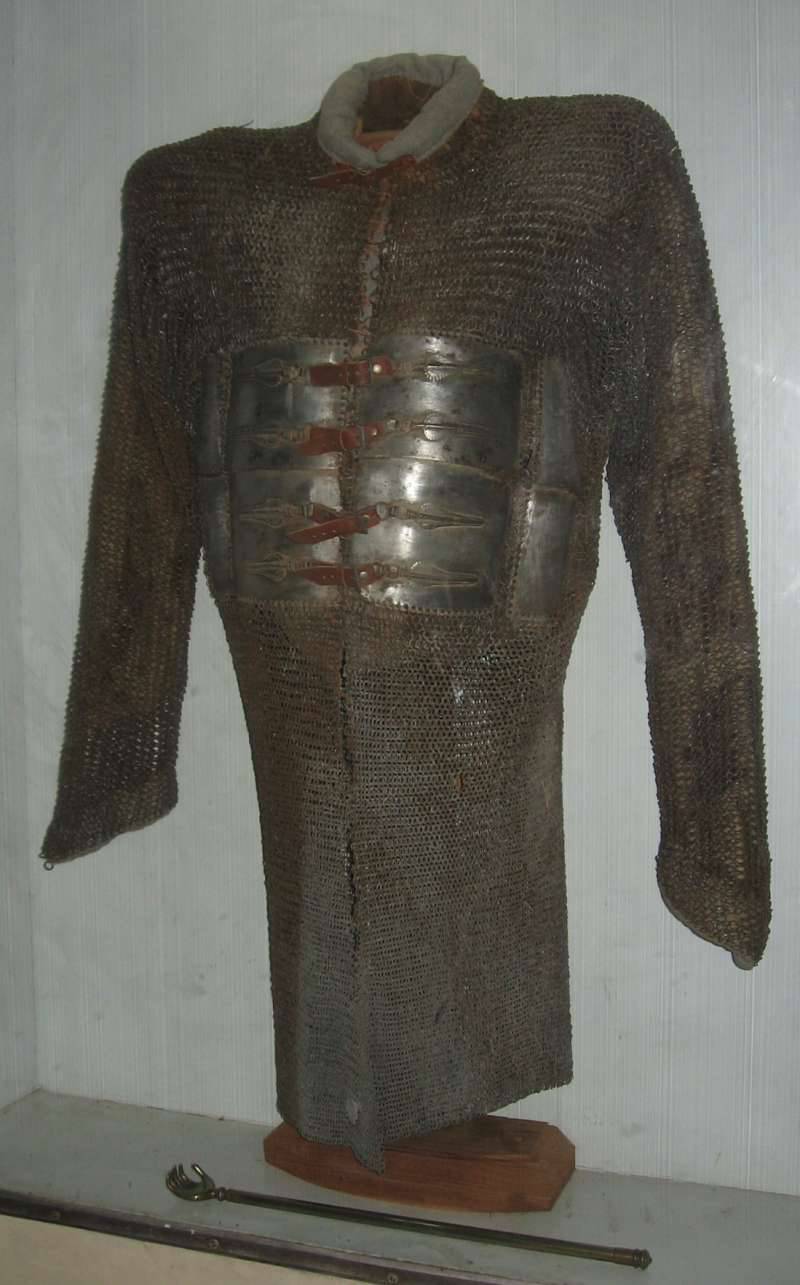
Information